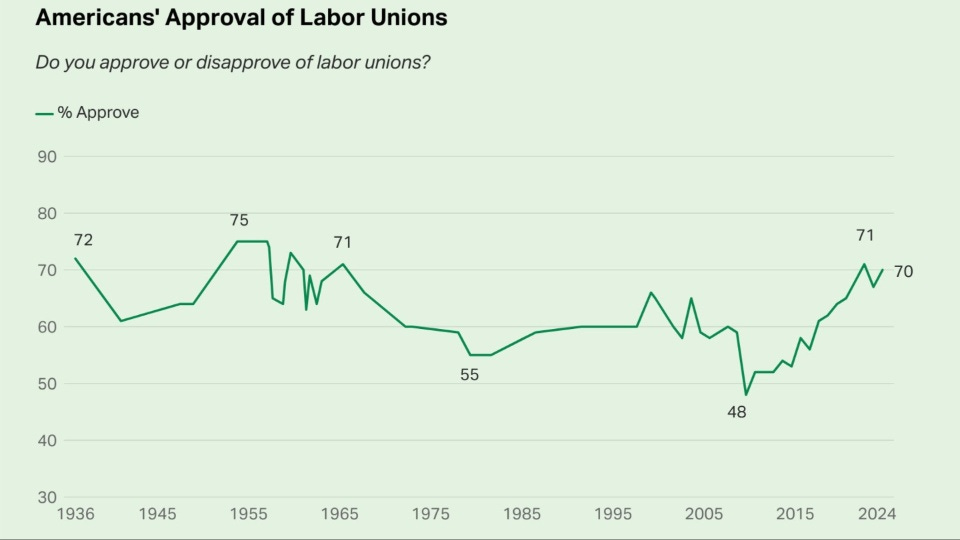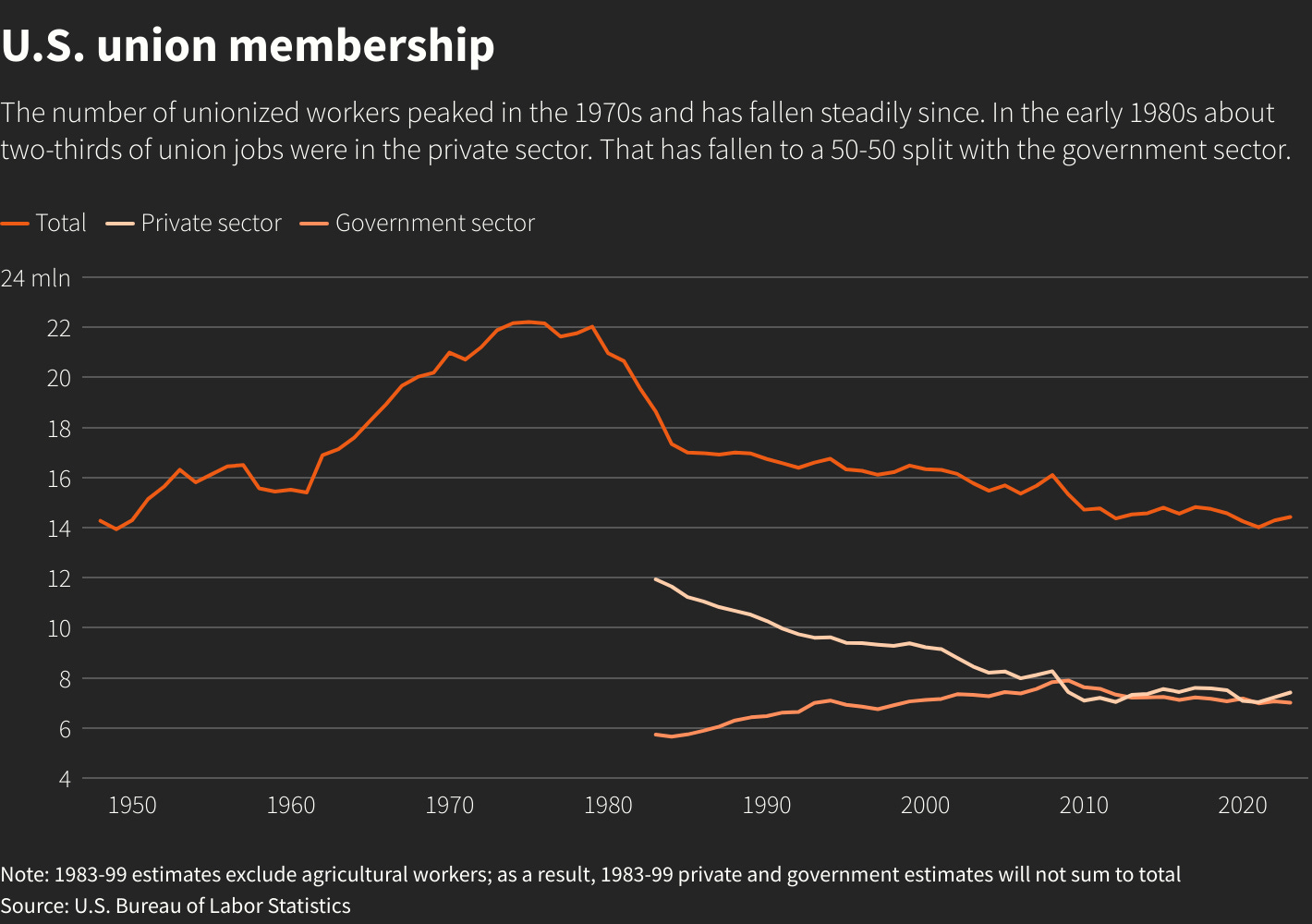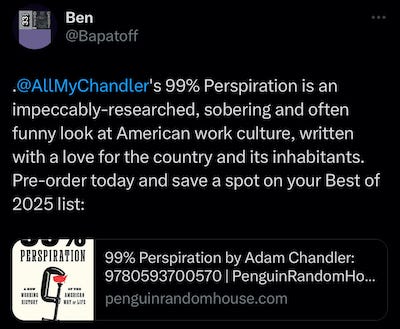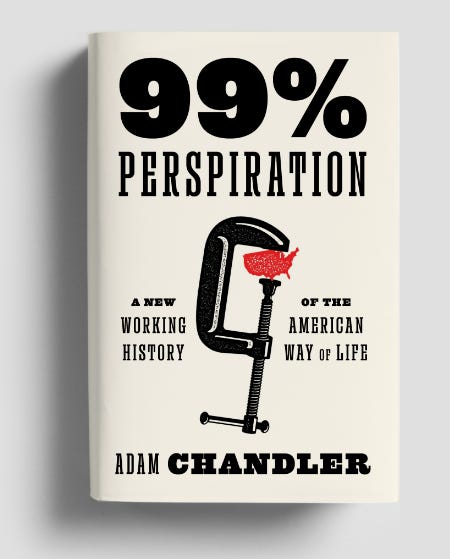Two Contradictions That Explain This Moment
Let's look at some data about vibes vs. reality
Well folks, summer is either almost over or recently ended, depending on which calendars you follow and what coffee drinks you do or do not order. I personally believe that summer goes until October with enough willful delusion and if I could pull off wearing white pants in general, I would wear them straight into Halloween.
My strange theories about this aside, what it’s indisputable is that we have transitioned from an intense season of global and domestic politics into the time where all that energy comes to a head. And, with the election coming, something I've been thinking more and more about the eroding baseline in American life.
By that I mean, the ways in which we’re siloed by what we hear and consume, where and how we live, what we believe. This isn’t groundbreaking, of course, just something I’m regularly circling whenever it pops up in different ways.
In 2022, for example, Tressie McMillan Cottom wrote compellingly (as always) about this through the lens of the show Yellowstone, which was one of the most watched shows on television at the time, one beloved by conservative audiences and, at best, sort of ignored in liberal circles and highbrow media outlets. But, despite its rugged Western themes and a cast of ostensibly right-leaning luminaries, the split in consciousness over the show wasn’t as simple as partisan preference. After speaking with an academic focused on cultural polarization, Cottom concluded, “Liberals aren’t watching ‘Yellowstone’ for cultural reasons, and conservatives love it for ideological ones.” Simple binaries don’t explain what’s going on with Yellowstone; what it shows us is how meaningful certain pop cultural signifiers are to people who identify with different groups.
Also this week,
, who writes an terrific/enlightening newsletter called about internet culture, wondered aloud about what mass appeal means in a time when it’s hard to tell whether something’s actually popular or just ubiquitous:The conclusion I’ve come to this summer — one I’m still not totally sure I fully believe yet — is that what’s really happening here is that virality is decoupling from popularity. And I think you could even argue that the very idea that mass appeal had to be accurately reflected back at us online and vice versa was an entirely millennial idea. A neurotic need to know, and quantify, exactly what everyone else was seeing and doing.
So what *is* going on?
The idea that we’re losing a grasp of common culture or even a collective sense of what’s popular or virtuous or meaningful makes it hard to see everything clearly. That wouldn’t necessarily qualify as a problem, except that we’re approaching a moment where we’re going to learn (with enormously high stakes) just how everyone actually feels about how things are going right now and where they should go from here.
This all brings me back to something I was thinking about in the lead-up to Labor Day: the split screen of contradictions between (dare I call them) the vibes that exist in my bubble and the external realities that undercut them.
Now, it should go without saying that vibes are not just irritating but also subjective. And since some combination of vibes and lived experience about the economy are what’s going to determine the election, it’s these vibes I wanted to dig into. (Apologies if you’re only here for the taco coverage. More of that soon.)
#1: 70 percent of Americans support unions but…
Context: Every year Gallup does a Labor Day poll about American support for unions. And this year, support for unions hit 70 percent, which is basically the peak of American support going all the way back to the mid-1960s.
The fine print: Despite all this goodwill, which was spurred (I think) by the absurdities around pay and safety and quality of life during the pandemic as well as some very public strikes and some election-year pandering, there’s a big BUT here: Union membership is at a historic low right now. From the AP, earlier this year:
The U.S. Bureau of Labor Statistics said 10% of hourly and salaried workers were members of unions in 2023, or around 14.4 million people. That is an all-time low, down from 10.1% of workers in 2022.
This isn’t by choice. Despite growing visibility and efforts around unionizing, it is a costly process, especially as companies (see Starbucks, Amazon, Apple, Google) throw sand in the gears by stalling, drawing out negotiations, threatening workers, and more.
But on the whole, I find it striking that – given the enthusiasm and/or political theater around worker rights, the images of UAW President Shawn Fain sporting a Trump Is a Scab shirt at the DNC – the historic lows in union membership (and the causes for that) don’t seem to break through. Are we actually seeing this clearly enough?
#2: Historically low employment or…
Context: If you search for the term “historically low unemployment” – don’t worry, I did it for you 🤓 – you’ll see pages of results about cities, states, and the country broadly enjoying a wild, historic run of low unemployment. The good things from this are obvious: higher wages, especially for low-wage workers. More workers who are traditionally left out of the economy are participating in it. Better incentives to keep workers happy in a tight labor market.
The fine print: The positive news about the economy comes with inevitable bragging rights. But again, while I was watching the victory lap at DNC, something happened that flew pretty much under the radar. On the second day of the convention, in the midst of all this excitement, a federal judge struck down the Federal Trade Commission’s ban on noncompete agreements that was set to go into effect this week.
30 million American workers are bound by noncompetes, which are thought to be used by roughly half of American companies.
As you might know, a staggering 30 million American workers(!) – 20 percent of the U.S. labor force! – are bound by noncompetes, which are thought to be used by roughly half of American companies. The workers affected by this decision, by the way, are not the high-salaried executives who mostly would have been exempt from the ban, but low and middle-wage workers like fast-food cashiers and hairdressers looking to start businesses or find better-paying jobs. Sometimes, they are doctors in underserved communities. The dominance of noncompetes as a feature of the American working way is both ridiculous and singular.
Now, to be sure, there are definitely other, sexier(?) ways to throw cold water on the story of the booming American economy. For example, what good is job growth or wage gains if they’re undercut by very real troubles around the cost of groceries, healthcare, housing, education? Or take all the positives experienced by the remote and hybrid work revolution – the boost in work-life balance, the accessibility of the economy for workers with disabilities or people who live outside major cities – and reckon with the fact that the access to and availability of these jobs have begun to disappear.
But what I find particularly compelling about the noncompetes story is that it’s something that can’t immediately be fixed by politics or whatever public momentum exists around real change. The FTC banned noncompetes and then a judicial appointee named by former President Trump knocked it down. And that judge isn’t going anywhere. For me, it’s a reminder that many of the biggest issues that stir popular movement are still going to play out in the courts, not matter what the vibes or the voters have to say about it.
Yeesh, well, I hate to send us off into the weekend on that kind of note so let me share two things. One is the first unofficial review of my new book, 99% Perspiration, which comes out on January 7. It’s from fellow scribe Ben Apatoff:
The second is that, if you’re a Barnes & Noble Rewards member (it’s free to join by the way), you can (and pretty please should) pre-order 99% Perspiration for 25% off (CODE: PREORDER25). The only catch: THIS DEAL ENDS AT 3 AM (ET) TOMORROW!
Does 25% off mean that you’ll only get 74% of the perspiration? No, absolutely not. You’ll get all 99%, plus my undying gratitude, bringing it up to an even 100. What more could anyone ask for?
That’s it for this week. Thank you as always for reading and for the support!
With love,
Adam






